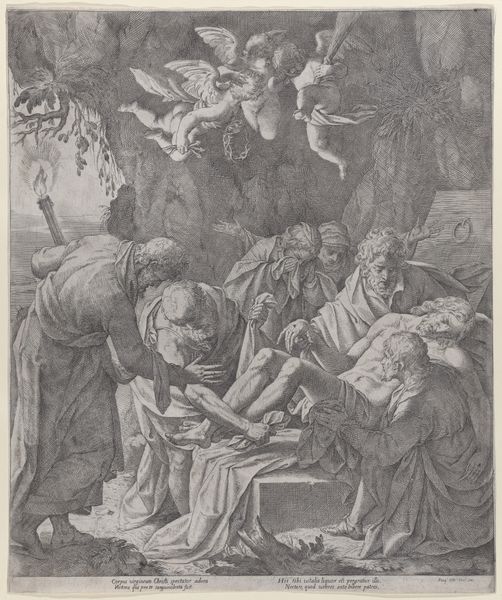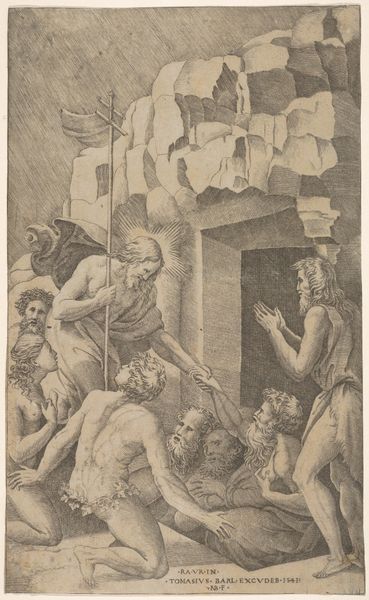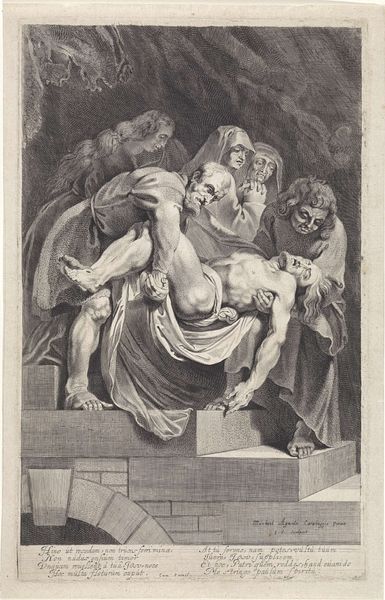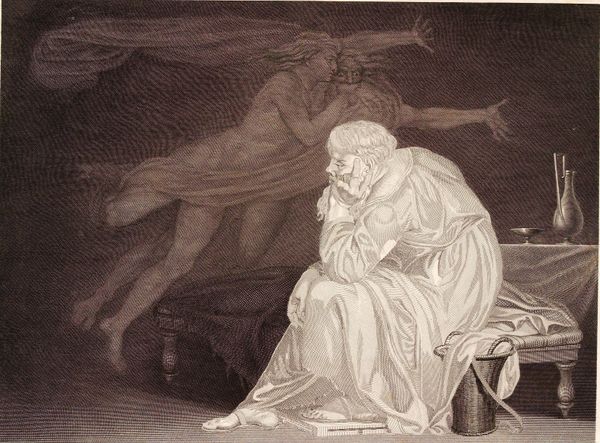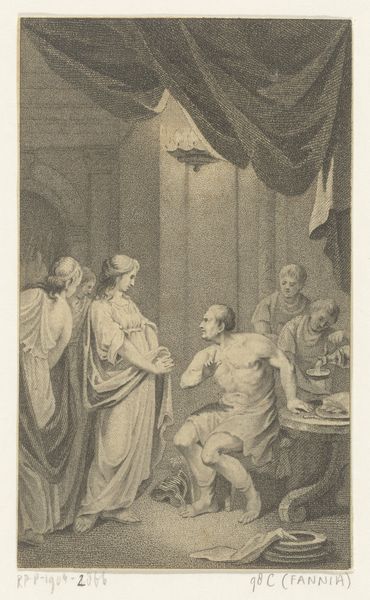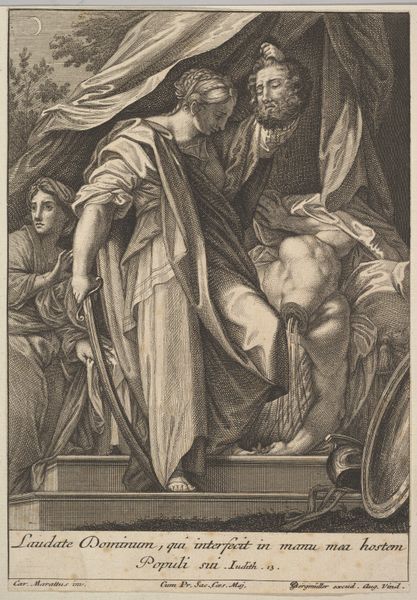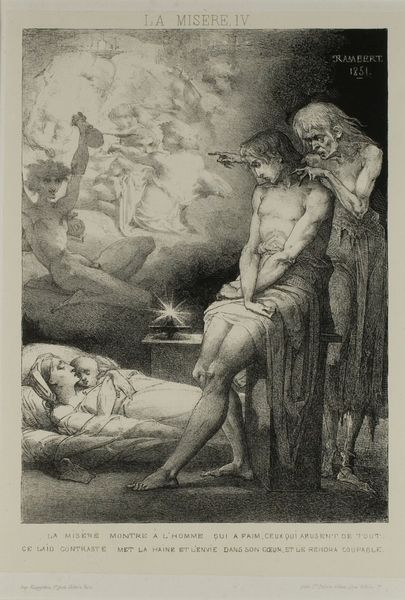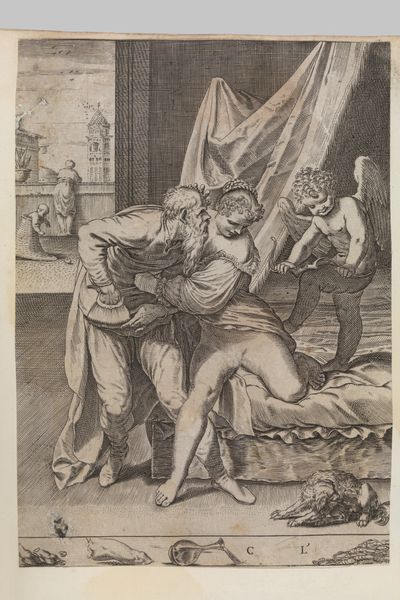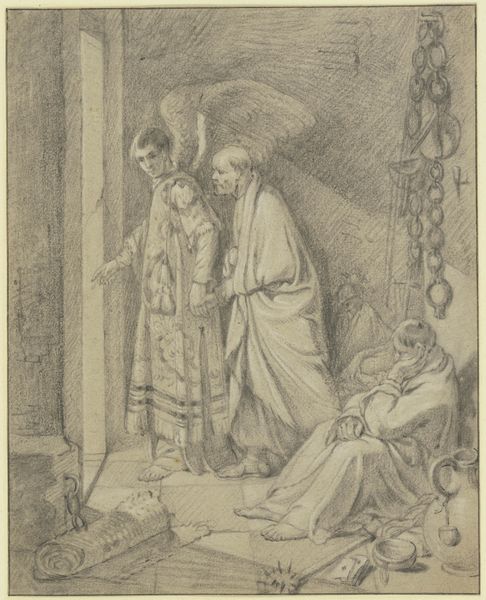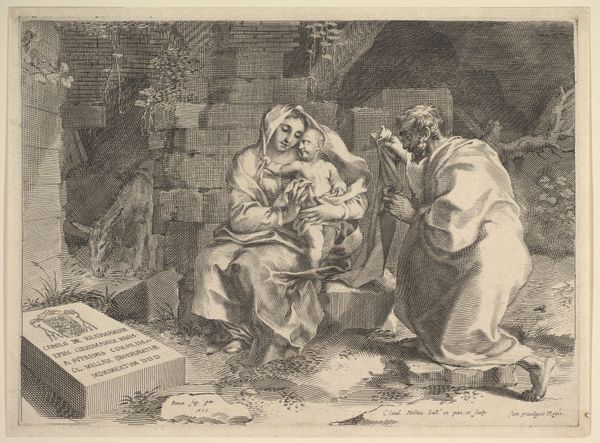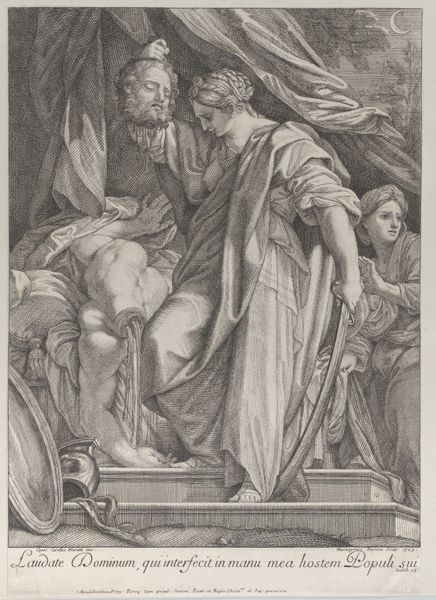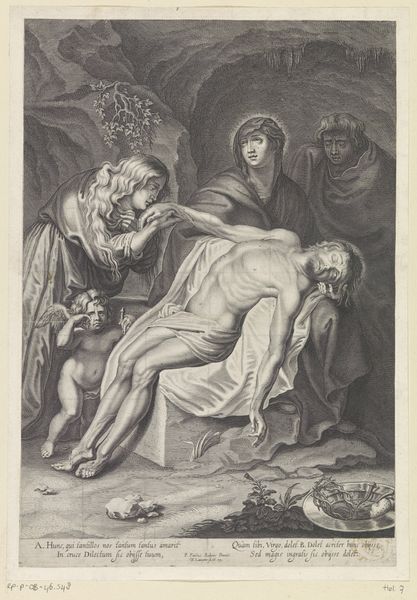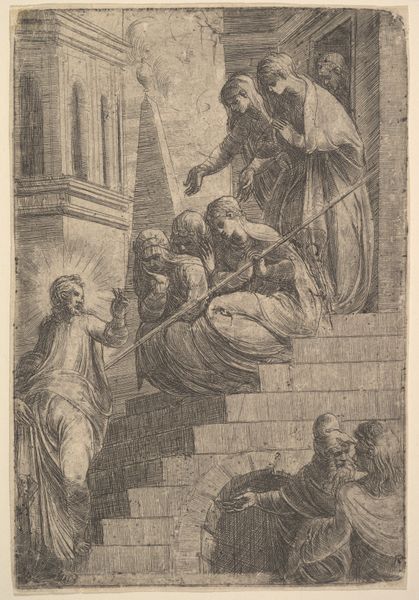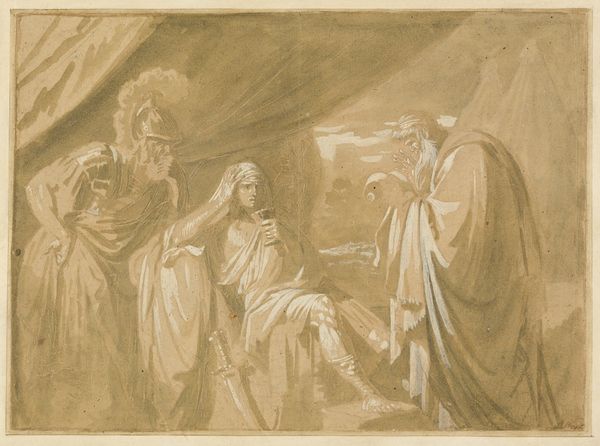
drawing, print, paper, ink, graphite, pen, charcoal
#
drawing
#
narrative-art
# print
#
charcoal drawing
#
figuration
#
paper
#
oil painting
#
ink
#
romanticism
#
water
#
graphite
#
pen
#
charcoal
#
history-painting
Dimensions: 639 × 522 mm
Copyright: Public Domain
Curator: Fuseli’s “Ugolino and His Sons Starving to Death in the Tower," created around 1806 using pen, ink, graphite and charcoal on paper, plunges us into a scene of profound despair. What are your first impressions? Editor: Stark and visceral. The stark contrasts immediately seize attention. The figures are almost spectral, emerging from the inky blackness, giving it an intense, almost claustrophobic atmosphere. Curator: Fuseli masterfully utilizes chiaroscuro to amplify the emotional weight. Note the muscularity and starkness, exemplifying a rejection of neoclassical restraint, embracing a dramatic Romantic sensibility. We should observe the almost sculptural treatment of Ugolino’s form as a primary compositional device. Editor: And it reflects its time so clearly. Think of the political turmoil following the French Revolution. This work, echoing Dante's Inferno, perhaps speaks to a broader disillusionment, the collapse of societal order, and humanity's capacity for cruelty, which clearly mirrors societal unrest, in his treatment of an already tragic literary precedent. Curator: Indeed. Beyond the political interpretation, structurally, the composition’s asymmetry generates a sense of unease. Ugolino, centrally placed, yet seemingly caged by his sons' despairing forms, suggests psychological entrapment. Fuseli rejects symmetry as a structuring element. The formal distortion directly contributes to the narrative’s impact. Editor: Absolutely. And considering its exhibition history, it is presented as high art, thus lending a platform to ponder the power of historical narratives to reflect anxieties present in our modern life, or rather his contemporary society in 1806, after decades of warfare. How this image serves as a potent symbol in a broader context. Curator: Fuseli delivers a raw portrayal of suffering using his technique to elevate the narrative, prompting the observer to confront human experience stripped bare. Editor: Fuseli successfully reminds us of art's capabilities—how it can serve as a crucible for distilling humanity’s most troubling aspects to evoke meaningful emotional and intellectual reaction in both our respective societies.
Comments
No comments
Be the first to comment and join the conversation on the ultimate creative platform.
